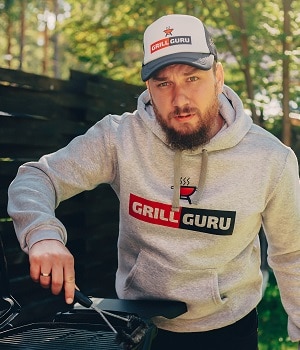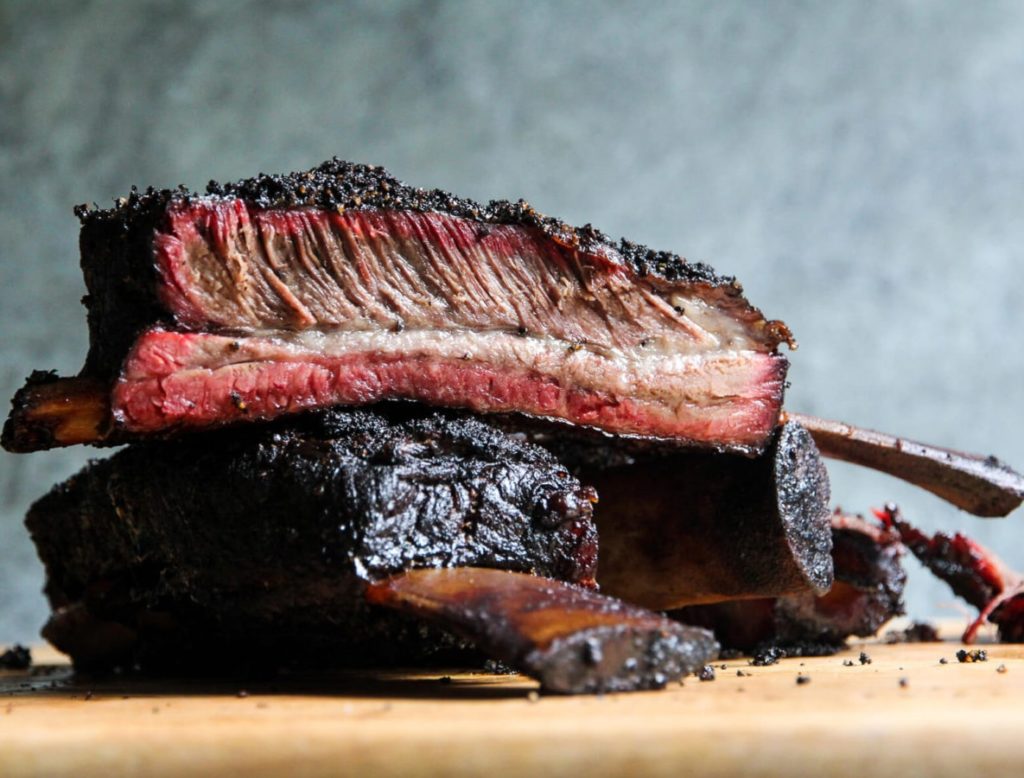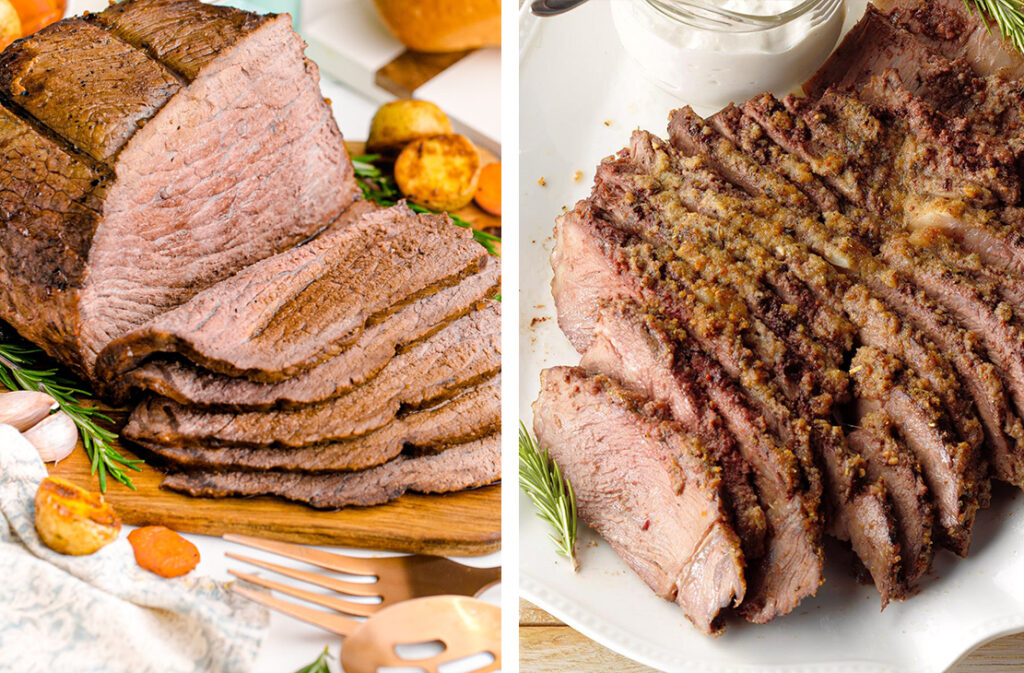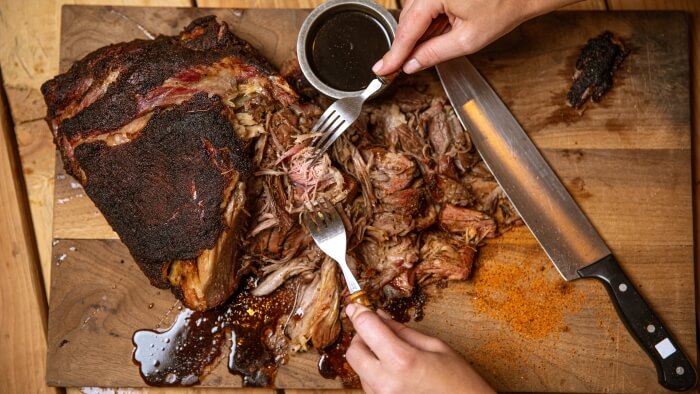

The shank vs butt ham debate is one that you’ll have to take part in when buying ham. This is especially true if you’re serving a small group of people since a whole ham is likely too big for the occasion. Both components are fairly good purchases, and they have some unique characteristics that can help you identify which one to pick.
That said, the decision will largely be based on personal preferences, although other factors can also affect your choices. As such, if you’re curious about the difference between shank and butt ham and are sure this information can help with your purchase, keep reading.
Before we can discuss ham shank vs butt to see which one is better for you, we first need to define ham. A whole ham incorporates components taken from the hind leg of a pig. During preparation, this back leg is cut from the pig’s body, and the hock is removed.
The hock is a component of the leg that takes up the lower part of the pig’s ankle. It’s often sold separately and tends to contain a lot of gristle and fat. What’s left after removing the hock are the shank and butt ham components. The pork then goes through a curing process where either dry brine or a wet brine solution can be used.
After that, the meat is smoked until it’s ready to eat, then it’s packed. Notably, the Kansas City Steak Company has a reputation for top-of-the-line meat products, and their Fully Cooked Smoked Ham Meal shows that this reputation is warranted. In addition to the different varieties and preparation methods for the ham, this purchase also comes with a mac and cheese casserole and a mud cake, so you won’t have to do much cooking.
Worth mentioning is that a whole ham is quite sizeable and would prove excessive for the average family’s needs. This is one major reason why it’s separated into butt ham and shank portions. Additionally, not many people are willing to buy a whole ham, and thus dividing it into the shank, and butt ham components makes it easier to sell.
Also worth noting is that the terms shank and butt are not only used to describe ham but are also used as descriptors for a cut of pork. In terms of the cut, a shank is sourced from the lower part of the front leg. Butt, on the other hand, refers to the area above the shank, and this will typically be in the animal’s shoulder region. That’s why you sometimes hear a pork butt being referred to as a pork shoulder.
As you can see, one significant difference between whole ham and these two other pork cuts is that the former is sourced from the hind leg, while pork butt and pork shank cuts are sourced from the front leg. Now let’s look at the ham butt vs shank end of things.
The shank is from the lower remaining part of the pig’s leg after the hock is removed. As such, it will have a bone that runs through the middle. Notably, the positioning of this bone makes the meat a lot easier to carve compared to the butt. Additionally, pork ham components contain lots of fat.
According to reviewers, the Burgers’ Smokehouse Ham Shank Portions are an excellent representation of what high-quality ham shank portions look like. They’re sold in portions of four or eight in addition to being smoked using Hickory wood for an enhanced flavor.
Butt ham, on the other hand, is derived from the upper part of the leg. If you’re serving many people, this component will provide you with more meat.
Ultimately, if you want something easier to carve and present, you should go for the shank. Conversely, if you want larger servings, the butt ham will do.
Given that the shank still contains a section of the pig’s femur, the ham ends up looking like a sort of funnel. The meat in this area is slightly tougher than the meat from higher up in the leg. However, it makes up for this by being full of flavor.
On the other end, the butt ham tends to look smaller than the shank. It also has a rounded edge which tends to be more problematic when you’re carving the piece.
Despite being a good source of protein, ham isn’t a very healthy option, and you might be better served if you only eat it on occasion. That said, health-wise, there is a difference between the butt portion and the shank portion.
The shank component, as we mentioned above, has a lot of fat in addition to the meat. As such, if you’re counting calories, a single serving of the shank can make a huge difference for the worse. Alternatively, seeing as though the butt portion ham tends to be leaner, you won’t consume as many calories if you pick this component.
Another reason you shouldn’t indulge in ham daily is that the curing process leaves the meat with a lot of sodium. In fact, if you eat two servings of ham, you’ll likely have exceeded the recommended sodium intake levels.
Another thing you should know before you set off to the store to buy ham is the serving size for each adult. This can help with planning where you won’t have lots of leftovers, and neither will any of your guests go hungry. Remember, ham is fairly unhealthy, so you don’t want to serve too much.
This is also visible in the general recommended guidelines for ham intake, where you’re advised to serve a half-pound of boneless meat per adult. For bone-in meat, this translates into one pound for each adult. If you have kids at your gathering, be sure to account for that by reducing the portions.
You may also encounter something called the picnic shoulder ham. Typically, you get it for a lower price compared to regular ham. This implies there is a difference between the two. So what is the difference between shank and shoulder ham?
Well, you might not see much of a difference if you look carefully at the two options. However, trying to carve a shoulder ham is not as easy as carving the shank alternative. This is because the shoulder is lined with muscles that run in different directions.
Finally, the picnic shoulder ham features tougher and denser meat than regular ham.
Spiral ham is a term that may confuse some of you. However, it doesn’t actually describe or refer to a different type of ham. Instead, it describes how the meat has been cut. Spiral ham may contain the two major components, i.e., the shank and but, although they’re cut in a spiral motion without being removed from the bone. Consequently, you’ll find the slices in the shank area are denser while those on the ham butt are quite large.
Since the only difference between spiral ham and regular ham is the spiral cut, you can make your own at home if you’re willing to carve the spiral slices manually. This will allow you to dictate the size of each slice to match your preferences.
You may come across many other types of ham in the market. However, at their core, they’re all classified according to four different criteria: the cut, cure, age, and the level of cooking. We’ve covered most of the cuts in the section above with examples such as spiral, shank, butt, and picnic shoulder.
As for the cure, you might find classifications such as dry-cured ham. This means that dry salt was applied to the surface of the ham until it was absorbed. For wet-cured ham, the meat is dipped in a liquid salt solution.
With regards to the level of cooking, some types of ham are fully cooked, others only partly done, and others will need to be thrown into a smoker or cooked on a gas grill before you can put them in your mouth. Finally, for the age, some ham options are aged to enhance the flavor. Some could even be aged for as long as seven years. However, the longer they’re aged, the more expensive they tend to be.
Typically, ham products don’t need any extra preparation. You can eat them without having to cook them. However, there are some exceptions, as we mentioned above. Consequently, before putting away that electric griddle or stove, be sure to read the details on the package to ensure you have a fully cooked ham.
This write-up should provide you with any information you need on the shank vs butt ham debate. This includes the most nutritious parts, the parts that hold the most flavor, how to portion it, and even how to tell apart the different components. As such, your next ham shopping trip should be significantly easier. For any other questions, you can comment below, and we’ll get back to you.





